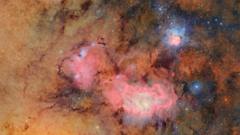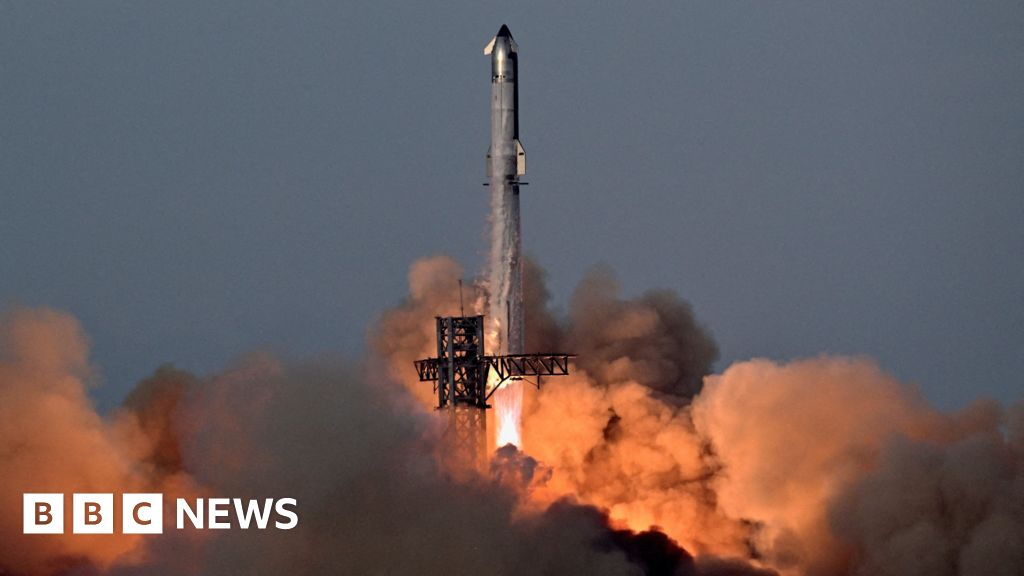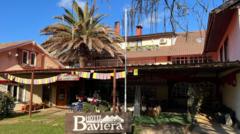The Vera C. Rubin Observatory in Chile has made headlines by unveiling its first images, showcasing the immense capabilities of this futuristic telescope designed to delve deep into the cosmos. These initial captures feature the Trifid and Lagoon nebulae, beautifully illustrating vibrant gas and dust clouds in a prolific star-forming region located 9,000 light years from our planet.
Equipped with the world’s most powerful digital camera, the Rubin Observatory is set to redefine our comprehension of the universe. Scientists believe that if a ninth planet exists within our solar system, the Rubin lens will uncover it within its first operational year. Moreover, this telescope is poised to detect potentially hazardous asteroids within striking distance of Earth and to create an intricate map of the Milky Way, while also providing insights into dark matter, the enigmatic substance that constitutes a significant portion of the universe.
"This is a transformative era for astronomy as we embark on a decade-long journey of sky exploration," expressed Professor Catherine Heymans, the Astronomer Royal for Scotland, who has long aspired to this moment. The United Kingdom is heavily invested in this venture as a key partner, hosting data centers that will analyze the detailed observations as they span the night sky.
Notably, the Rubin Observatory is located on the pristine peaks of Cerro Pachón, a site renowned for its clear, dark conditions ideal for astronomical observations. To maintain the optimal dark environment crucial for celestial imaging, strict protocols are enforced to limit artificial light.
Inside the observatory, engineering teams work tirelessly to ensure that the dome surrounding the telescope remains cloaked in darkness to prevent interference with the delicate light captured from distant stars and galaxies. The telescope itself features a sophisticated three-mirror design allowing for high light capture, vital for observing faint objects that illuminate what the universe looked like long ago.
This venture, marked by its state-of-the-art 3,200-megapixel camera, will incessantly observe the night sky over a decade, producing a Legacy Survey of Space and Time. The camera captures a snapshot approximately every 40 seconds, operating through the extended nighttime periods with rapid adjustments to focus on various celestial bodies.
The excitement surrounding these first images stems not just from their beauty but from the unprecedented potential they hold for scientific exploration. The observatory will monitor specific regions continually, alerting scientists of any transient events, such as supernovae or asteroid approaches.
Professor Alis Deason from Durham University, part of the extensive global collaboration, anticipates deeper investigations into the Milky Way's structure. She envisions that the Rubin Observatory could visualize elements up to 1.2 million light-years away, far surpassing the current reach, potentially revealing parts of the galaxy hidden to prior telescopes.
As the universe's mysteries unfold, the Rubin Observatory's groundbreaking capability may finally shed light on the elusive Planet Nine, theorized to exist far from our solar system. "Understanding how this exceptional observatory functions will take time, but our anticipation for discoveries is immense," concludes Professor Heymans.
Equipped with the world’s most powerful digital camera, the Rubin Observatory is set to redefine our comprehension of the universe. Scientists believe that if a ninth planet exists within our solar system, the Rubin lens will uncover it within its first operational year. Moreover, this telescope is poised to detect potentially hazardous asteroids within striking distance of Earth and to create an intricate map of the Milky Way, while also providing insights into dark matter, the enigmatic substance that constitutes a significant portion of the universe.
"This is a transformative era for astronomy as we embark on a decade-long journey of sky exploration," expressed Professor Catherine Heymans, the Astronomer Royal for Scotland, who has long aspired to this moment. The United Kingdom is heavily invested in this venture as a key partner, hosting data centers that will analyze the detailed observations as they span the night sky.
Notably, the Rubin Observatory is located on the pristine peaks of Cerro Pachón, a site renowned for its clear, dark conditions ideal for astronomical observations. To maintain the optimal dark environment crucial for celestial imaging, strict protocols are enforced to limit artificial light.
Inside the observatory, engineering teams work tirelessly to ensure that the dome surrounding the telescope remains cloaked in darkness to prevent interference with the delicate light captured from distant stars and galaxies. The telescope itself features a sophisticated three-mirror design allowing for high light capture, vital for observing faint objects that illuminate what the universe looked like long ago.
This venture, marked by its state-of-the-art 3,200-megapixel camera, will incessantly observe the night sky over a decade, producing a Legacy Survey of Space and Time. The camera captures a snapshot approximately every 40 seconds, operating through the extended nighttime periods with rapid adjustments to focus on various celestial bodies.
The excitement surrounding these first images stems not just from their beauty but from the unprecedented potential they hold for scientific exploration. The observatory will monitor specific regions continually, alerting scientists of any transient events, such as supernovae or asteroid approaches.
Professor Alis Deason from Durham University, part of the extensive global collaboration, anticipates deeper investigations into the Milky Way's structure. She envisions that the Rubin Observatory could visualize elements up to 1.2 million light-years away, far surpassing the current reach, potentially revealing parts of the galaxy hidden to prior telescopes.
As the universe's mysteries unfold, the Rubin Observatory's groundbreaking capability may finally shed light on the elusive Planet Nine, theorized to exist far from our solar system. "Understanding how this exceptional observatory functions will take time, but our anticipation for discoveries is immense," concludes Professor Heymans.


















